'I don't think it has really set in': First all-Black team to summit Everest talk historic trek
With headlamps on, stars above and ice below, they made their way up above the clouds to their goal: a mountain peak covered in flags and mementos. Then they made history. But the journey was only halfway over.
In May, the Full Circle Everest team become the first all-Black expedition to climb to the top of Mount Everest, the highest mountain in the world above sea level.
The team made it safely down the mountain and back home, but the impact of that historic achievement is still taking shape.
"I don't think it has really set in that we actually accomplished this," says team leader Philip Henderson. "It was a three-year process of us starting this project and then completing it. I'm just proud of the team and the time and commitment and sacrifices by everybody on the team."
Seven Full Circle Everest team members — Manoah Ainuu, Eddie Taylor, Rosemary Saal, Demond Mullins, Thomas Moore, James "KG" Kagami, and Evan Green — successfully reached Mount Everest's summit. Along with Henderson, other members of the team include Frederick Campbell and Abby Dione.
Four members of the team — Henderson, Saal, Taylor and Ainuu — sat down with USA TODAY Sports to talk about their expedition, what happened on the mountain and what's next.
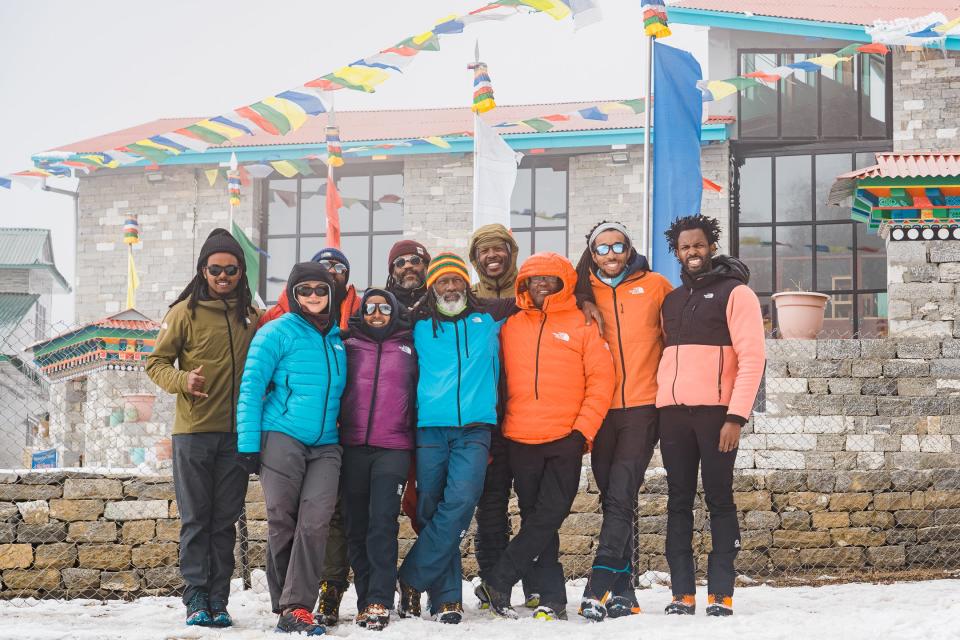
Why Everest?
"Everest is an iconic mountain," says Henderson. "Every year, people are paying attention to what's happening on Everest. And when you look at it in terms of representation in high-altitude mountaineering, there had been less than a dozen Black people who had attempted to climb Mount Everest. It was an obvious next step for everybody."
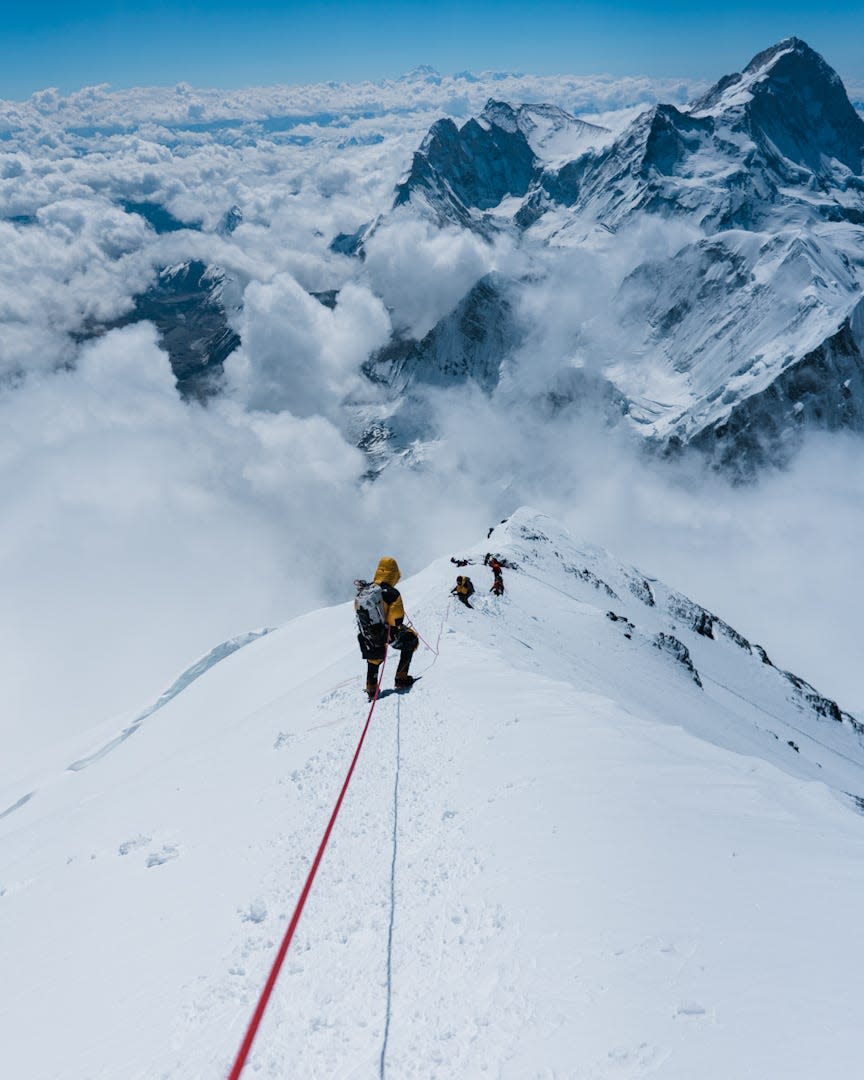
"It's more than just Everest/Sagarmatha," says Ainuu. "It's Nepal. Meeting everyone there and spending time in Nepal. Climbing is just the cherry on top of all that."
Mount Everest sits at the border of Nepal and China (Tibet), and it is also known as Sagarmatha or Chomolungma in those countries, respectively.
MORE: Sophia Danenberg, Full Circle Everest take big step for Black climbers on Mount Everest
The first recorded expeditions to Mount Everest were in 1921. In 1953, Tenzing Norgay, a Nepali Sherpa climber, and Edmund Hillary of New Zealand, made the first official successful ascent of Mount Everest. South African Sibusiso Vilane in 2003 became the first Black man to reach the peak, and Sophia Danenberg was the first African American and Black woman to summit in 2006.
How was the Full Circle Everest team created?
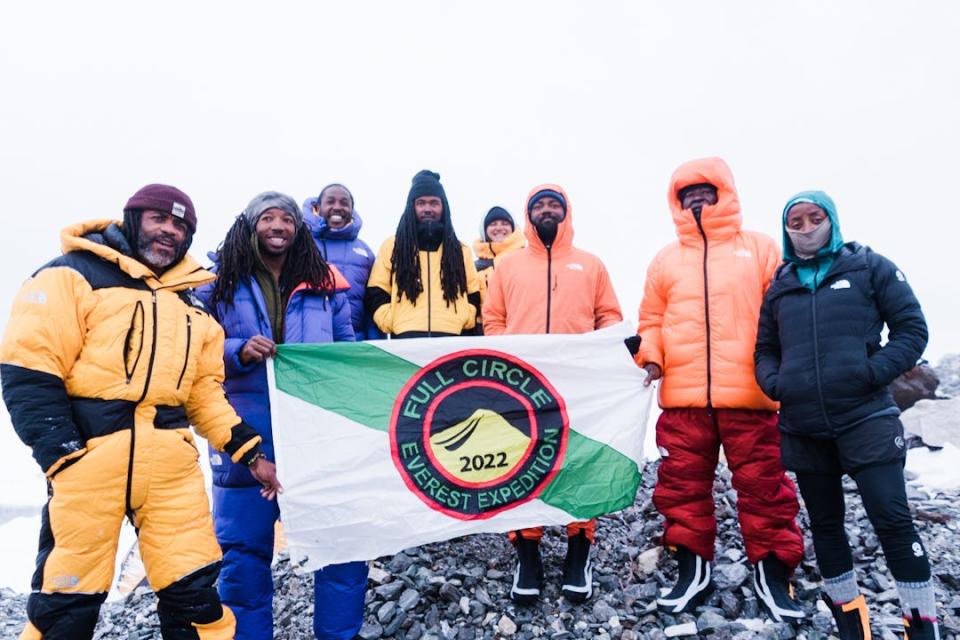
"We had some mutual friends, and I just happened to stumble upon a couple of the expedition members," Henderson says. "And then other ones like Rosemary and I had a connection for 10 years now, we've been on three or four different continents and three big mountains together now, and some of the other team members as well. We're all really connected in some way, either through climbing or through mentors or through our work in education."
Henderson, a California native, has worked in the outdoors industry for more than 30 years as leader, coach and educator. He was a member of a previous expedition to Everest and also climbed Denali and Kilimanjaro.
Saal, who grew up in Seattle and now lives in Tucson, Ariz., started climbing when she was a child. She also was a member of a Denali expedition in 2013.
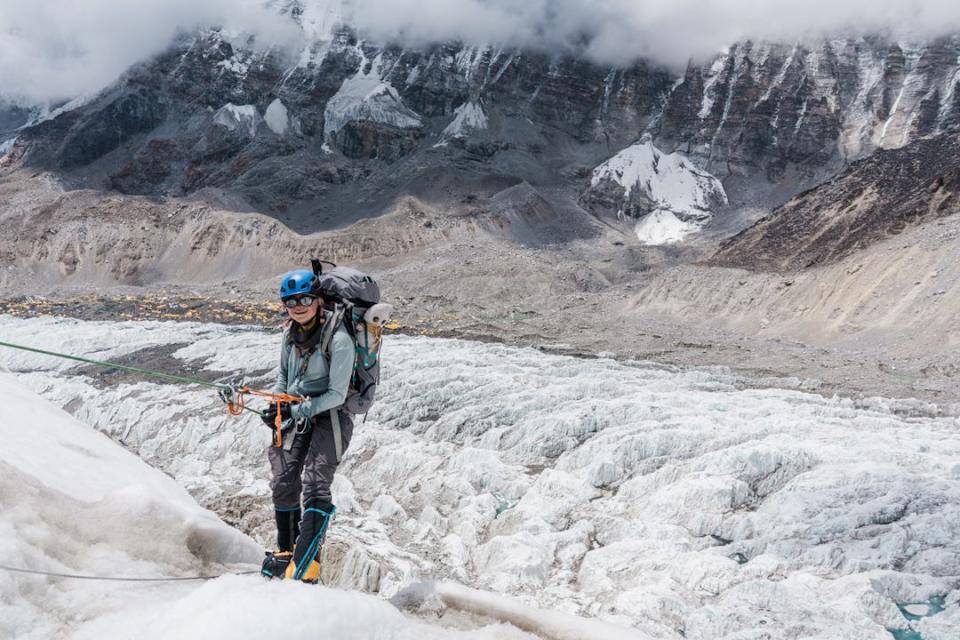
Ainuu, a professional climber for The North Face, was born in Compton, Calif., and began climbing while in high school in Spokane, Wash.
Taylor, a Midwest native, began climbing shortly after attending University of Colorado.
"We had a support team, as well," Henderson says. "Once we arrived in Base Camp, we had an additional 25 to 27 people who were a part of our team. They cook, they're putting up the tents and carrying oxygen and so on."
The Full Circle Everest was supported in their climb to the summit by Sherpa guides, including Pasang Nima Sherpa, Lhakpa Sonam Sherpa, Phurtemba Sherpa, Dawa Chhiri Sherpa, Sonam Gaylje Sherpa, Nima Nuru Sherpa, Chopal Sherpa, Chawang Lhendup Sherpa, Tasha Gyalje Sherpa, Amrit Ale, Pemba Sherpa (camera crew) and Nawang Tenji Sherpa (camera crew), according to a release from The North Face. The team also was supported by The North Face and the VF Foundation, among other sponsors.
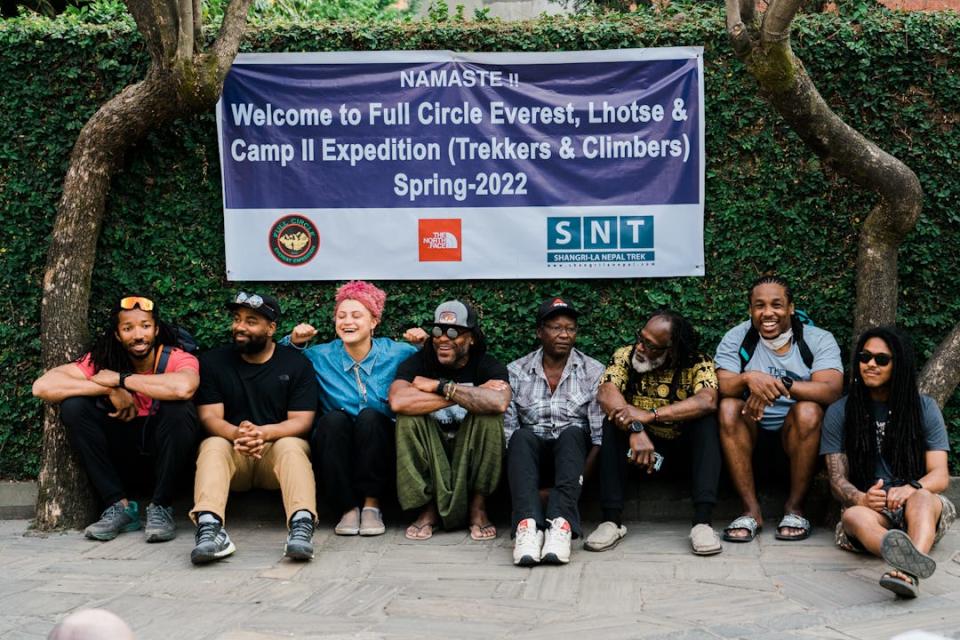
The Sherpa people, who live in the region and are more accustomed to the conditions, often accompany mountaineers on Everest and nearby peaks. Many Sherpa train from a young age as elite climbers and are hired as guides, porters, cooks and fill other roles. Places like the Khumbu Climbing Center were founded to help Nepali workers learn safe and responsible practices for high-altitude climbs. Also, the Jumpier Fund helps the widows and families impacted by the loss of high-altitude workers in the Himalayas.
The journey
The team arrived in Kathmandu in early April and spent several days organizing. Some friends and family members joined for the beginning of the trek.
After traveling to Lukla, a town on the side of a mountain with an airport (which was once called the most dangerous in the world due to difficult weather and terrain) the group made a 10-day trek to Everest Base Camp, hiking from village to village.
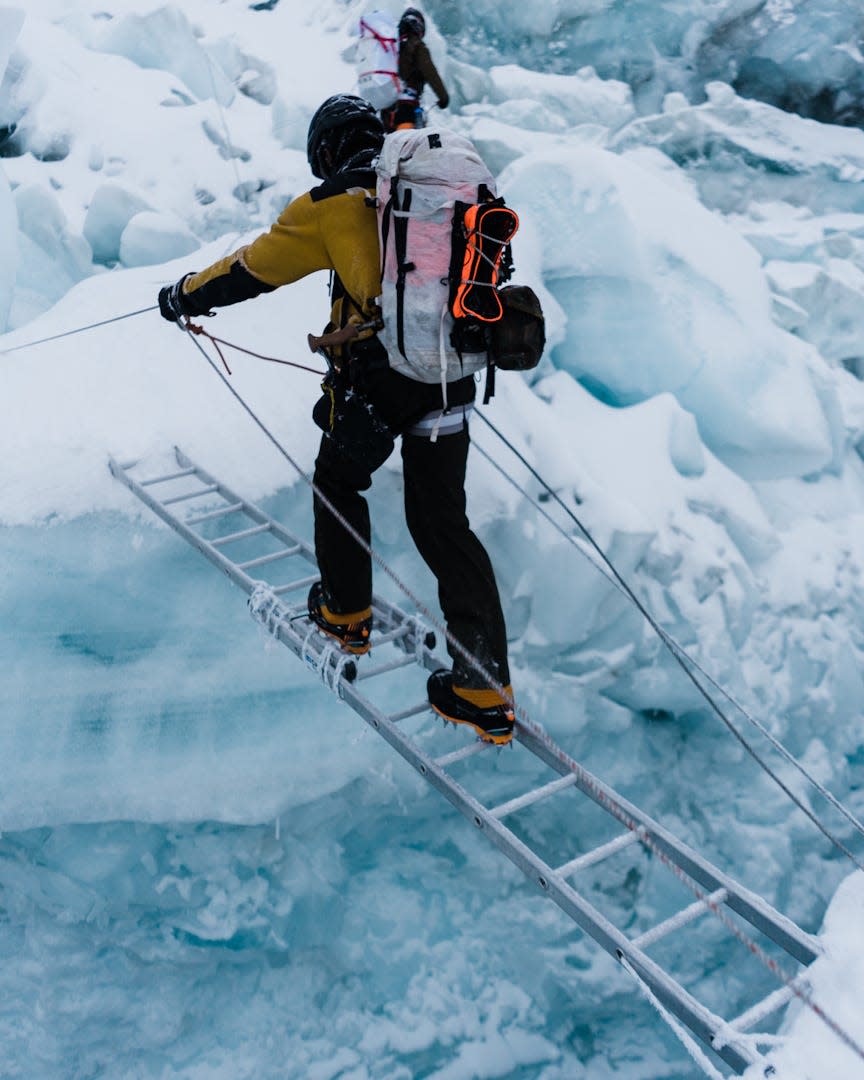
The larger group split up once they reached Base Camp, with family and partners turning around and heading home, and the core team preparing for their Everest ascent.
The team said they chose to climb a nearby peak for further acclimatization, instead of the more common first rotations up to Camps One and Two, climbing back and forth through the Khumbu icefall, a dangerous glacier between Base Camp and Camp One that is constantly shifting and littered with deep crevasses.
After a few days of recovery at Base Camp, the team's next rotation took them to Camp One, then to Camp Two, continuing to Camp Three and then all the way back down.
"And once we did that, we took five rest days and then we went to the summit," Taylor says.
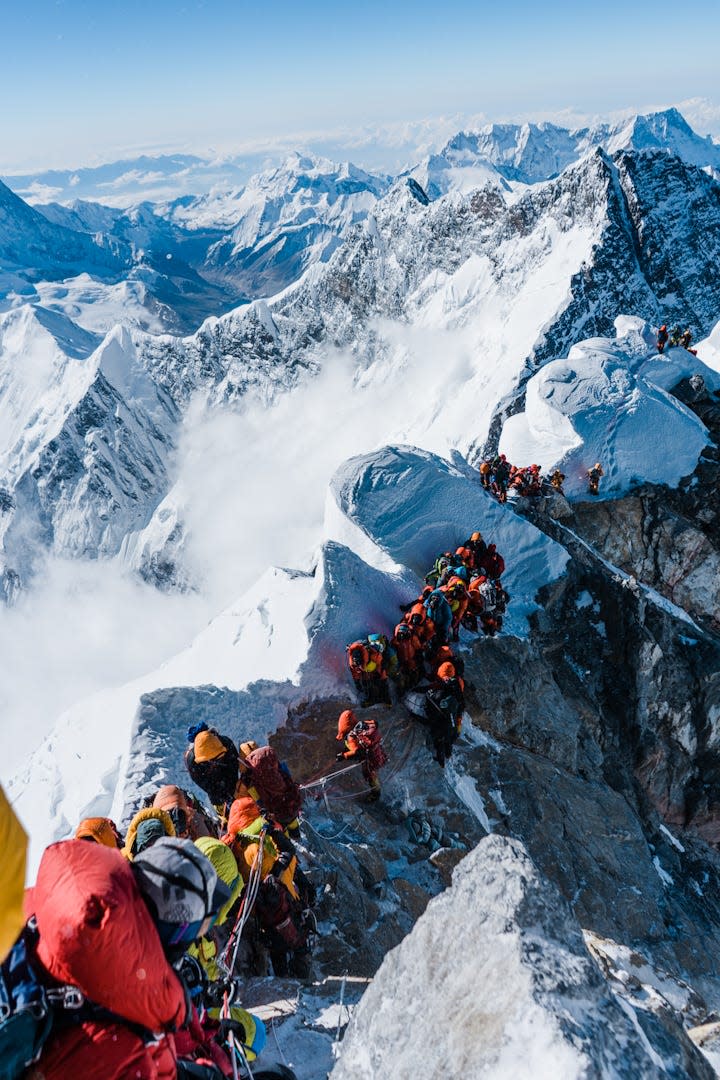
"It was a beautiful night," Saal says. "The night before (May 11), we started our climb from Camp Four between 8 and 9 p.m., right as the sun was setting. It was largely clear above us, and we were able to see stars. We were ascending in the dark using headlamps as our guiding light, while we were traveling on the fixed lines. But around us, it was really beautiful because there were a couple of storms in the distance, so it was cool to be climbing above the clouds."
Each team member had a personal Sherpa partner, and there were many other climbers on the mountain at the same time also making their push for the summit.
"The number we heard was about 200 people in total, including clients as well as Sherpa and support," Saal says. "So there was some traffic, there were some lines to wait in. Some moments of moving around folks, depending on if you're moving at a different speed."
And one-by-one early May 12, seven members of Full Circle Everest reached the top of the world.
But the trek wasn't finished. They had to safely make it back down the mountain.
"As a leader, I don't get excited until everybody gets down," Henderson says. "It's not over until it's over."
'A sigh of relief'
Henderson, whose previous expedition to Everest was about 10 years ago, said the effect global warming has had on the area was significant.
"Things have melted out," Henderson says.
Ainuu's favorite moments during the expedition were hanging out at Base Camp, listening to music and talking with other mountaineers.
"When we came back down from summit, we (had) a little celebration party, and we were dancing around doing the Sherpa dance," Ainuu says.
The final celebration at Base Camp with the entire crew was also one of Saal's favorite moments during the expedition.
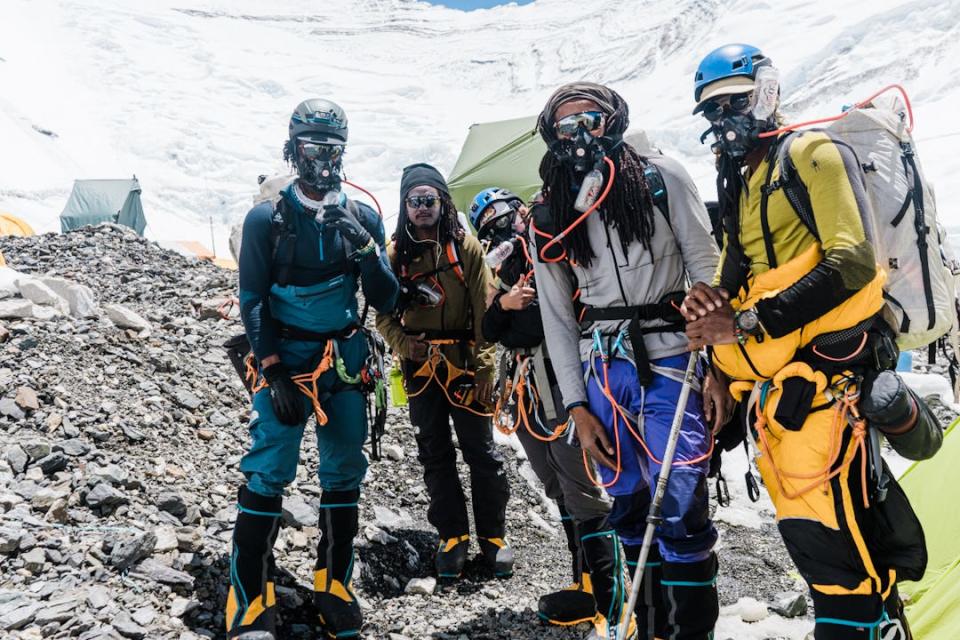
"It was kind of a sigh of relief: the harder part of getting back to this point is over, we're here, we're together as a team," she says. "We had a lot of moments of joy before that celebration. It felt so profound."
A favorite moment during the expedition for Taylor was "climbing the mountain, being there with the team, and the realization that it's something that we can do."
"Most people think going to Everest, even just going to Everest Base Camp, seems like a place that's reserved for the most elite people or the most elite athletes and alpinists," Taylor says. "And no, you can go to Nepal, you can go see this amazing culture. It doesn't have to be this super exclusive club. Yes, maybe it's hard to climb the mountain, but it's an experience that people from all walks of life and from all over the world can have."
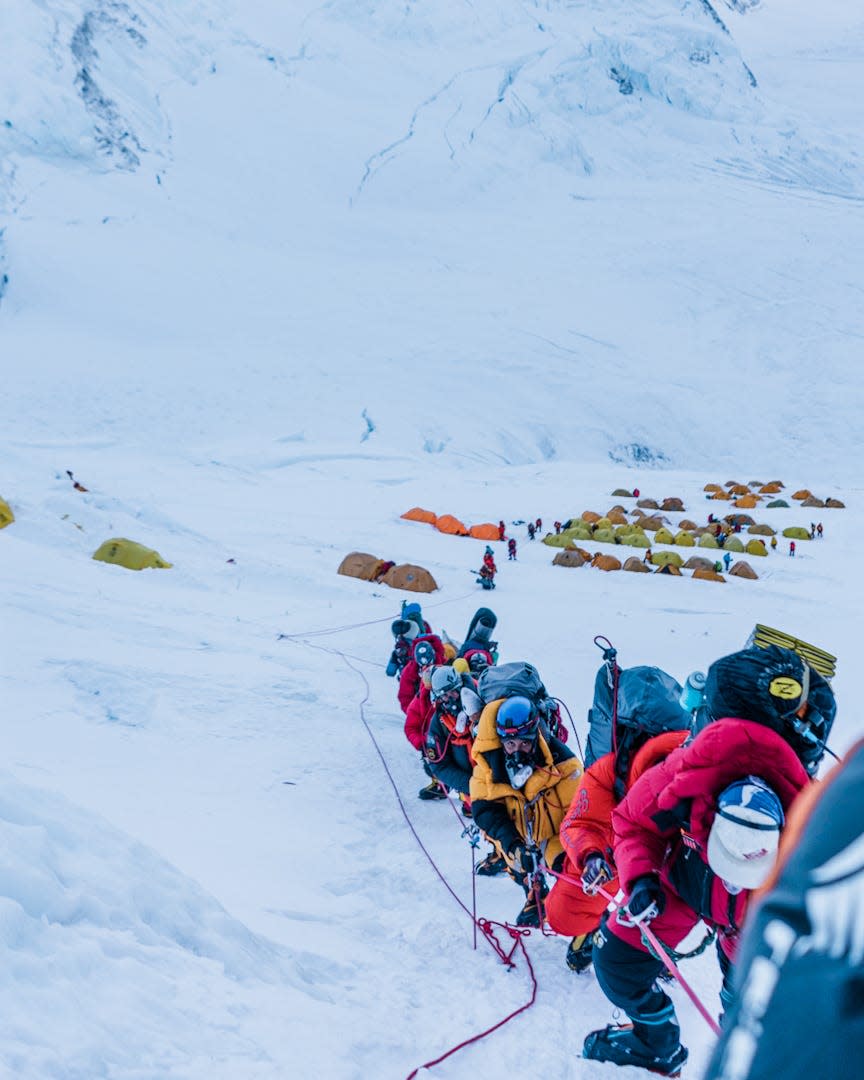
The team members spoke about how the expedition has — or hasn't — changed them and its possible impact.
"Standing there in that moment, just adding to what the outdoors and spending time in the mountains and wild spaces has represented for me, which is a sense of empowerment," says Saal. "And so it hasn't necessarily been like a fundamental shift, but just reinforcing that sense of empowerment, that sense of strength. And bigger picture of acknowledging that this is bigger than just that as well. That is why we are here doing this, to inspire folks to hopefully be able to have that same sense of empowerment or joy or just strength in these spaces."
"I honestly don't think summiting Mount Everest has changed me," Taylor says. "But I think that maybe part of the project has changed me. We've seen people reaching out and just so excited and getting motivated. Just being able to do a trip that can inspire other people and have people be excited to do things that are good for them. It's kind of where that change, that change that I've seen in myself."
Making history, making changes
"Climbing provides perspective," Ainuu says. "And it's really good for the mind and movement, in general. You translate that to the movement outdoors. There are so many studies that show what it does for our brains and for our mental health."
Henderson would also like to see some changes that would better encourage access.
More: More Americans than ever enjoying outdoor health benefits. But racial inequities persist.
"There is a climbing gym in Memphis (Memphis Rocks), and that's one climbing gym in one hood in Memphis," Henderson says. "And I'd like to see climbing gyms in so many other neighborhoods outside of the ones that already exist to give people more access to the sport.
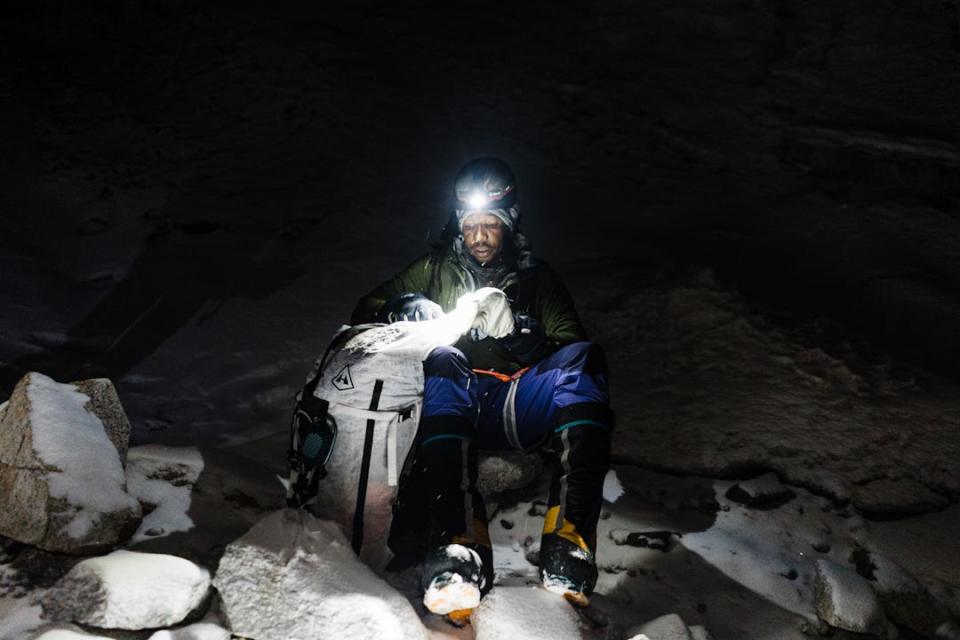
"Indoor climbing can lead to outdoor climbing, which can lead to ice climbing, which can lead to high-altitude climbing. There are so many things here, but that's one of the changes that I think that's well within the reach of the industry and people who could make those things happen as well."
What's next for the team? Henderson says first, some waiting.
"There's been a lot of people who have shown interest in checking out base camp, going to other mountains," says Henderson. "Even some people who say they want to go to Everest. But I can't really put a finger on it right now to say what's next for me. Life continues. Through this process, I also started to develop a nonprofit expedition that hopefully continues to help other folks find their summits."
Ainuu and Taylor both say they are looking forward to summer and spending time with their families, too.
And perhaps a trip back to Nepal awaits some of the team.
"From just two trips there, I feel like a piece of my heart is there, and like I really want to go back," says Ainuu. "It's a special place."
This article originally appeared on USA TODAY: Full Circle Everest team talks about historic Mount Everest summit

